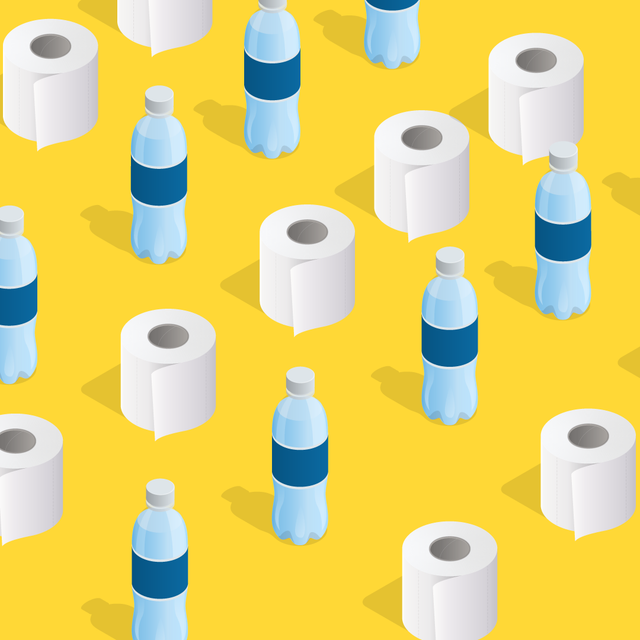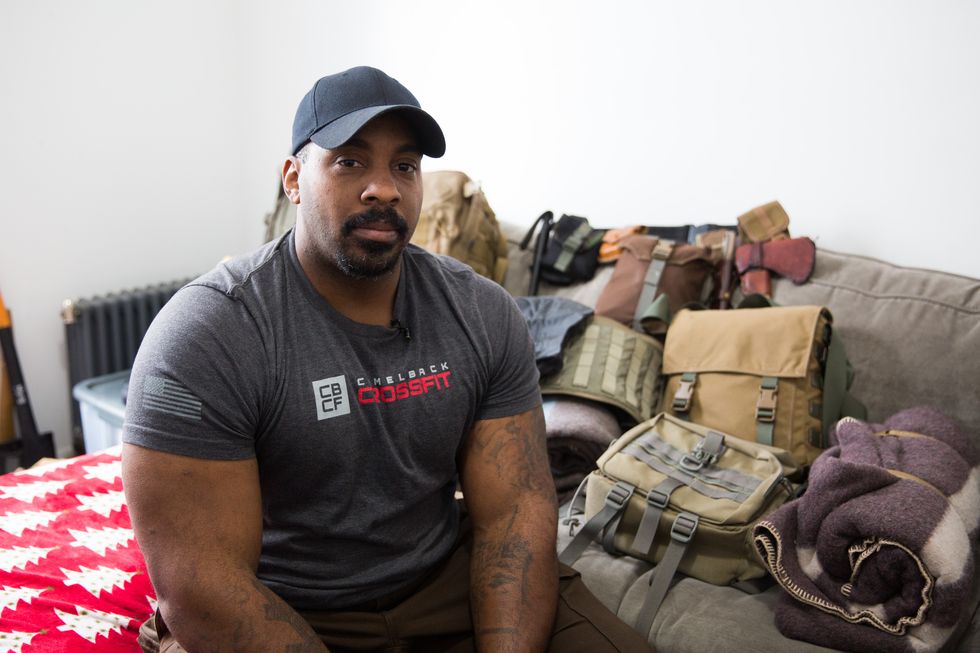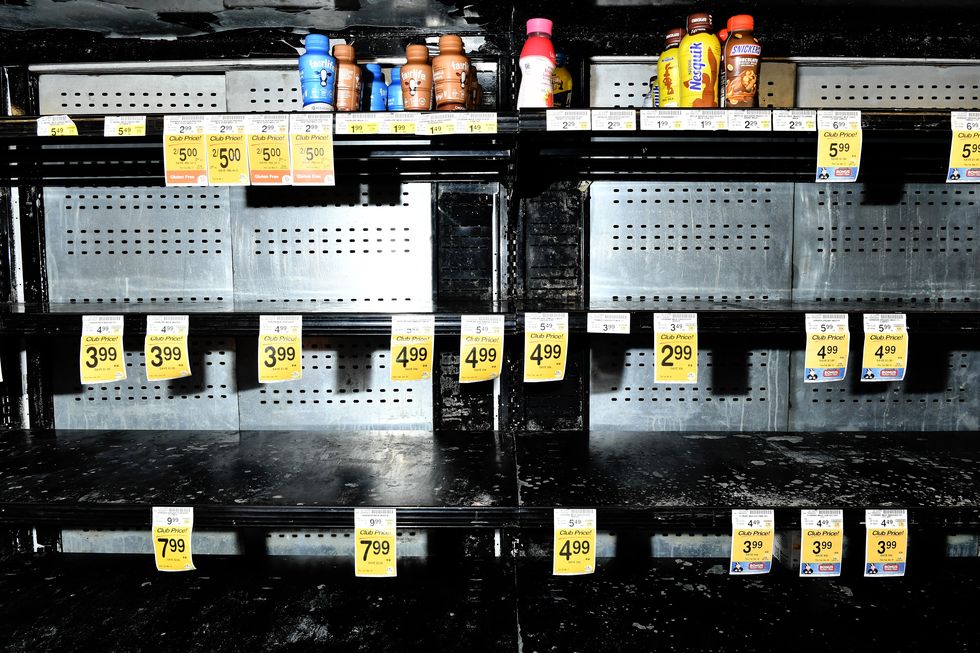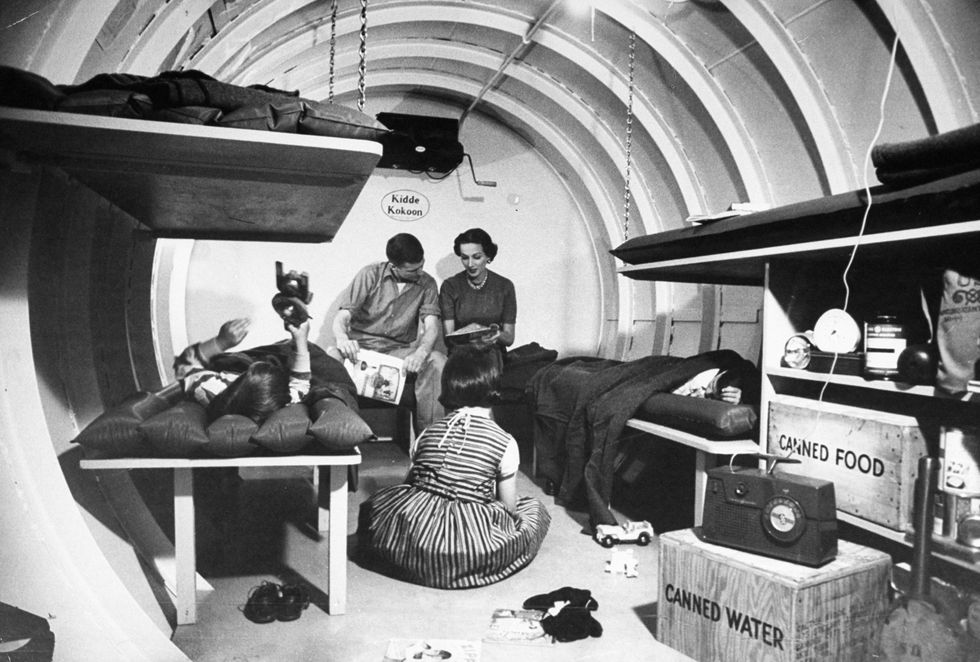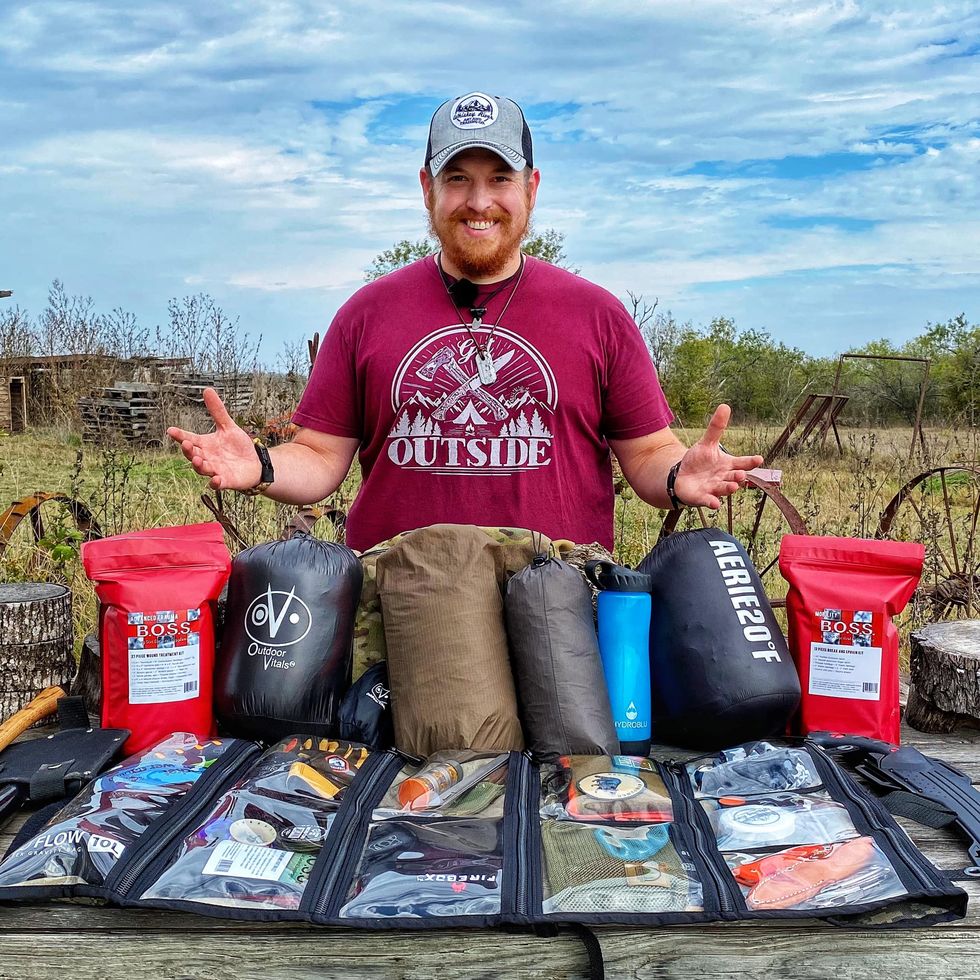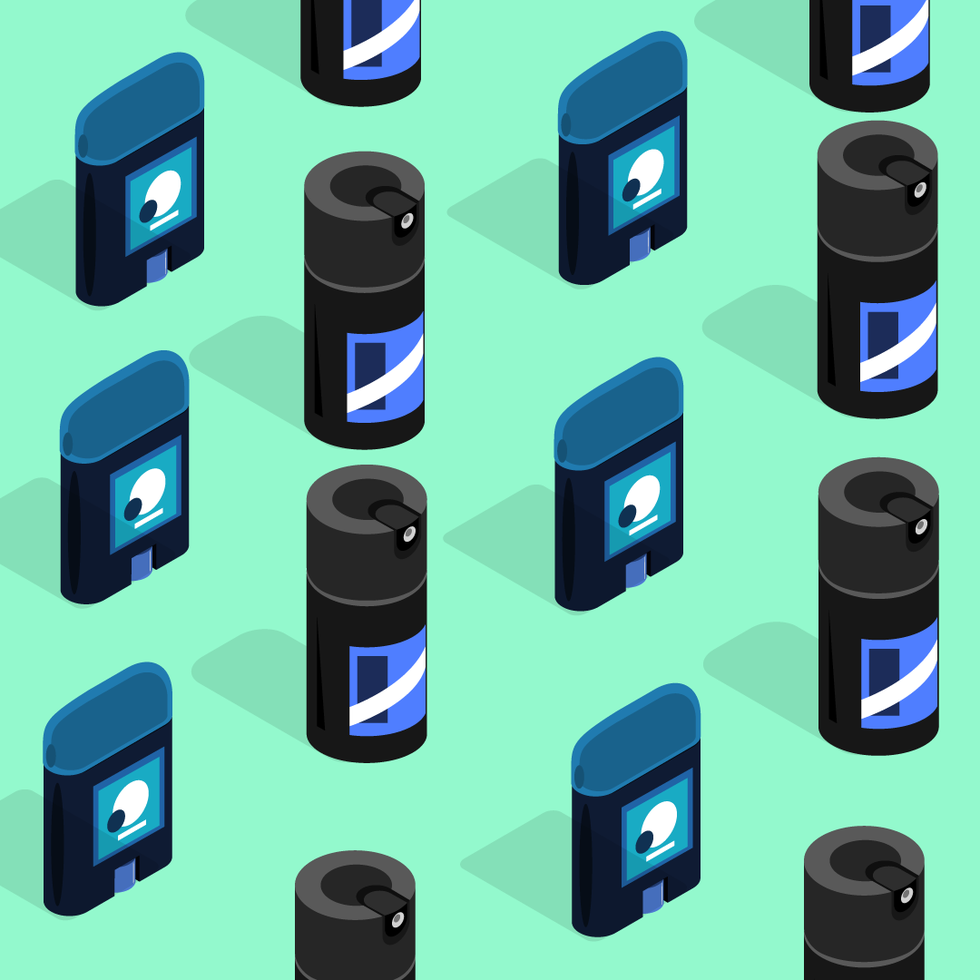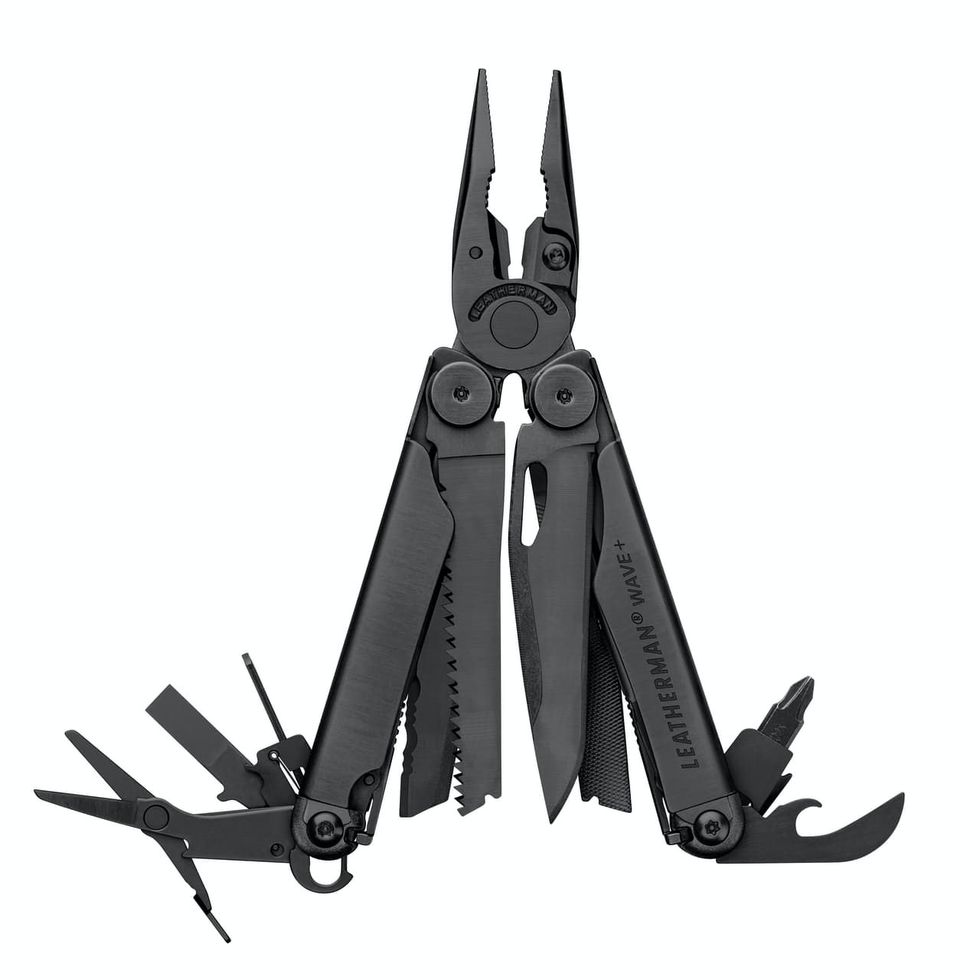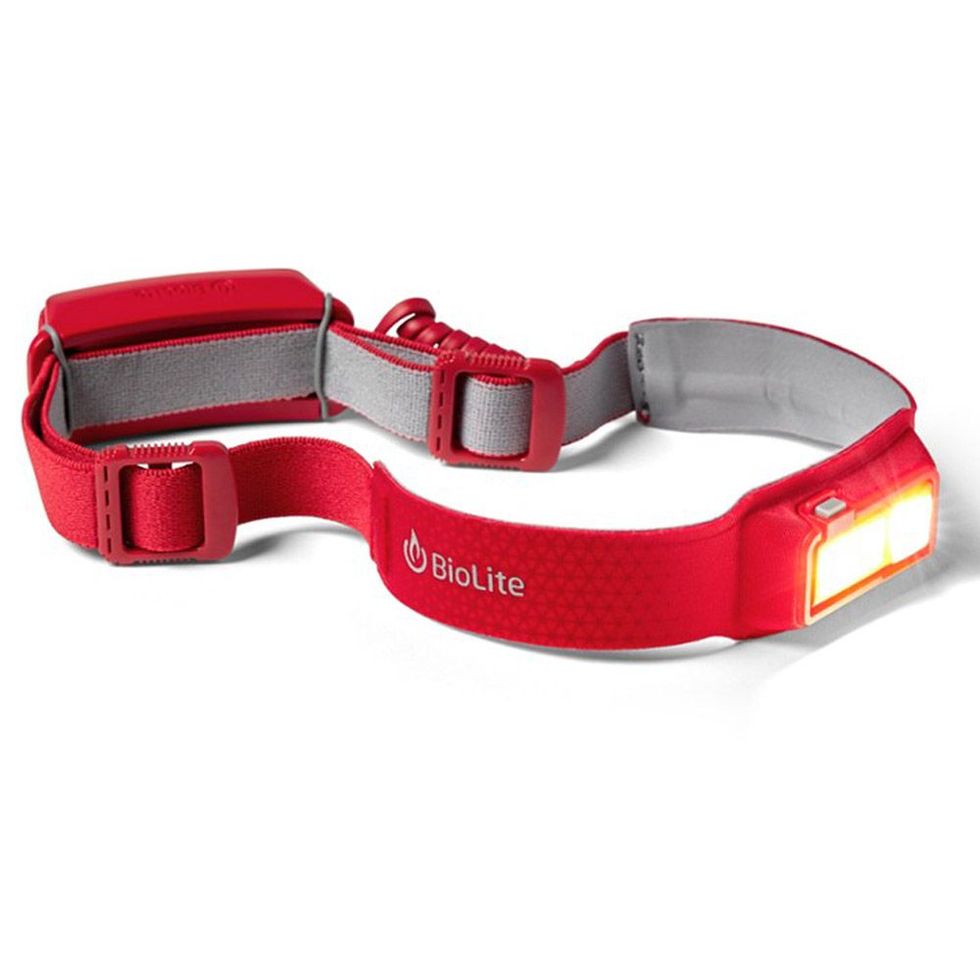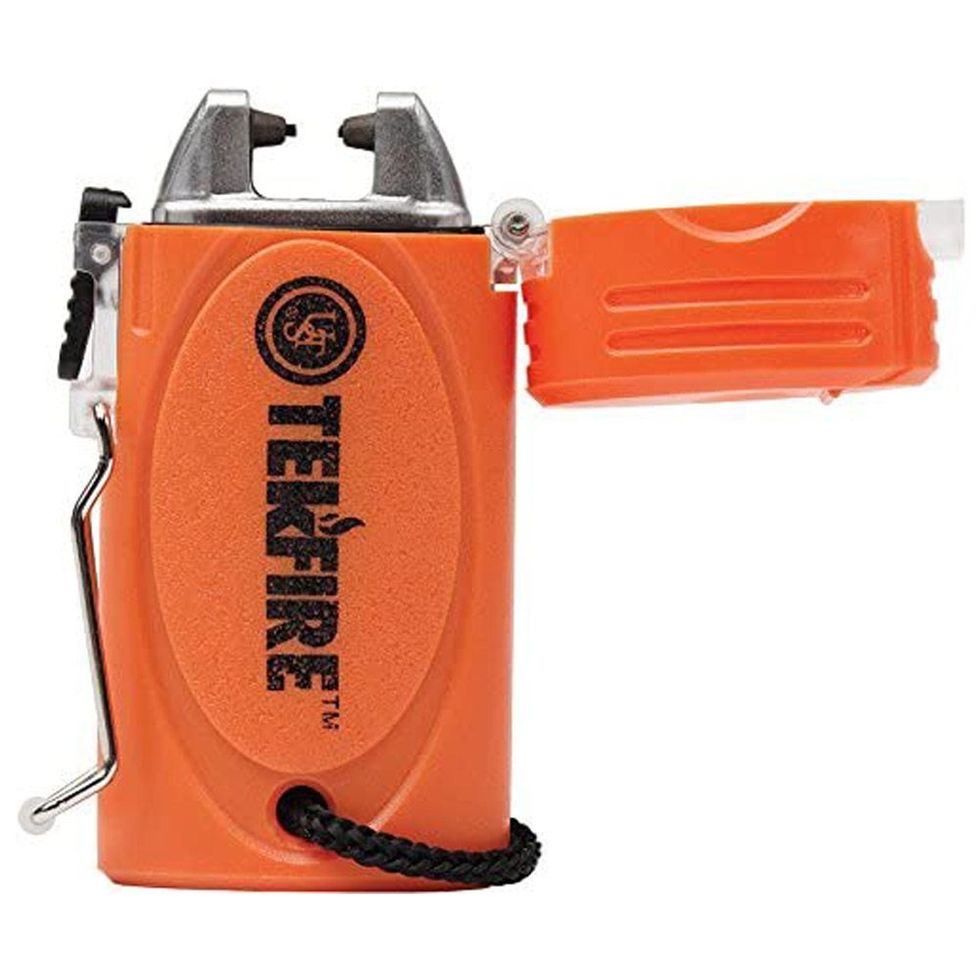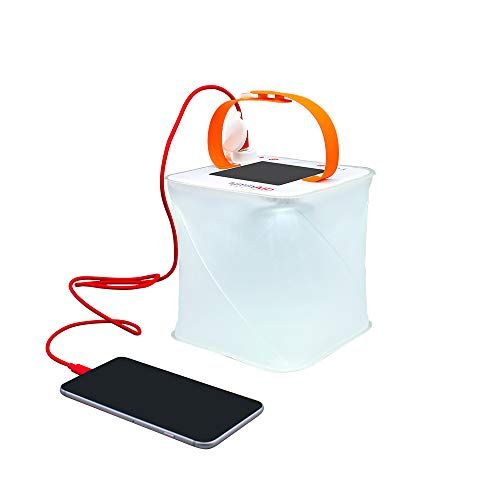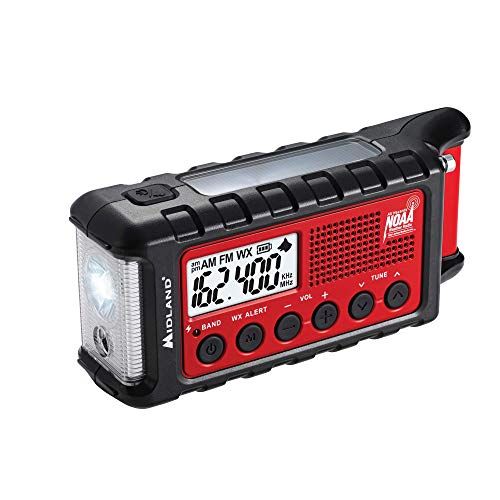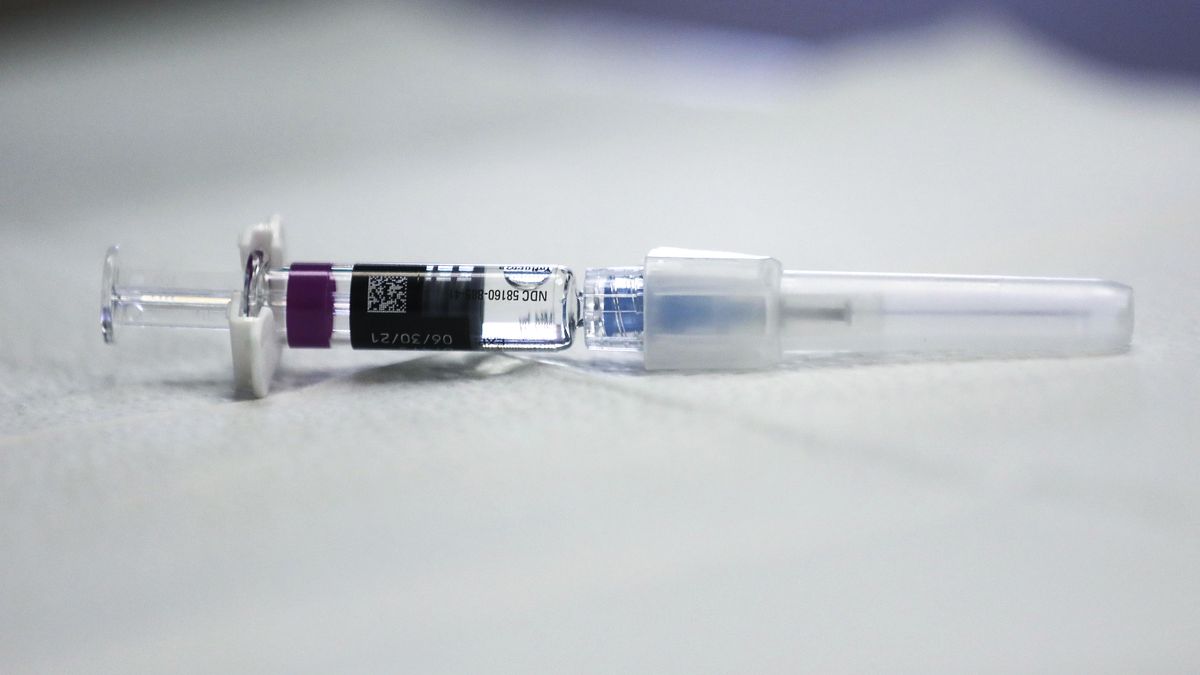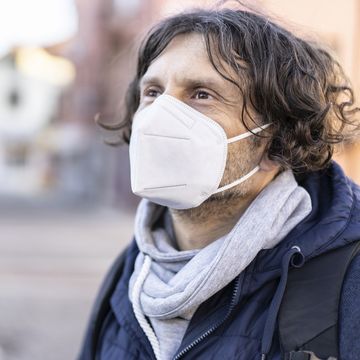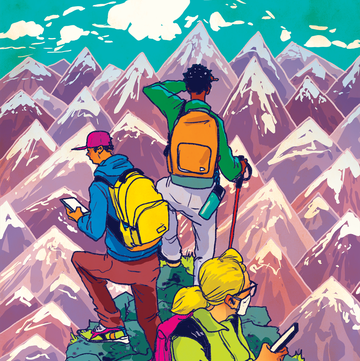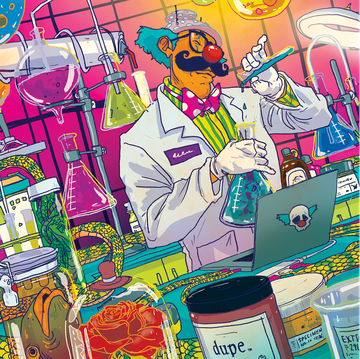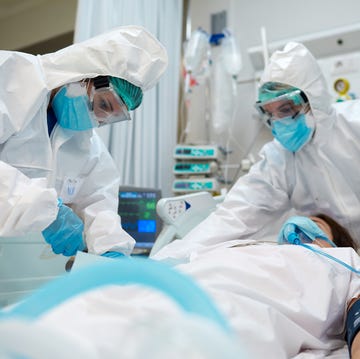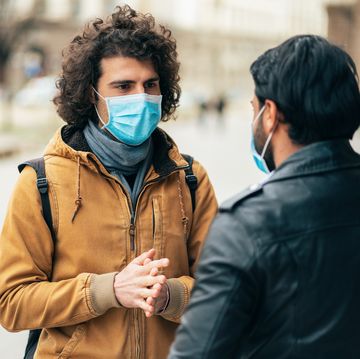ABOUT A YEAR AGO—before the coronavirus pandemic emerged, the world went into lockdown, and many grocery stores experienced a temporary shortage on meat and fresh vegetables—most Americans would have scoffed at Jason Charles’s year supply of Chef Boyardee and corned beef hash. But now, more people are reaching out to join the New York City Preppers Network, a social and educational group founded by the 43-year-old firefighter. (Or at least tune in to hear advice from his YouTube Channel, which he says has “blown up” to 67,000 subscribers.) “I've been telling people that the second wave is coming, and you need to get ready,” he says.
The so-called “second wave” refers to another potential flare up in COVID cases, which health officials have speculated will likely coincide with the winter flu season to create more of a drain on the economy and run on supplies. Even if you’ve been practicing physical distancing and so far avoided getting sick, you likely know the annoyance and aggravation of household shortages on everything from disinfectants to decent toilet paper. Except, of course, for preppers, who admit they are still learning new lessons about how to not only survive but thrive if life gets more bleak.
“Personally speaking, I was prepared,” says John Ramey, a former Silicon Valley executive and advisor to President Obama, who is about as far from the bunkered-down, tinfoil-hat-wearing stereotype you might imagine. Instead of prophesizing about doomsday, Ramey built a website called The Prepared to help people build their own stockpiles for plausible events like natural disasters, layoffs, and pandemics. “This kind of modern prepping framework worked, and it's been smooth sailing for us,” he says about him and his family plus a rapidly growing troop of followers. Ramey won’t disclose traffic, but says readership has increased by 25 times his usual rate pre-COVID.
Followers of The Prepared were likely better off during the pandemic, compared to those who just read emergency preparedness guidelines from organizations like The American Red Cross. Until recently, most organizations suggested storing only three days’ worth of food and water. The Prepared says two weeks is better—and was one of the first outlets to suggest the importance of buying facemasks. It wasn’t until April that The National Center for Disaster Preparedness recommended people start buying protective masks that align with guidelines from the Centers for Disease Control and Prevention. Their food and water guidelines have evolved to recommend anywhere from three to 14 days of nourishment—depending on budget and space constraints.
“Certainly nobody was going around stocking—well, some preppers were stockpiling N95 masks—which was actually great foresight, but I think this is a new recommendation that people need to have some sort of filtration or face covering,” says Jonathan Sury, MPH, CPH and Project Director at The National Center for Disaster Preparedness.
On the surface, the shelter-in-place stockpiling guidelines from both official and unofficially self-appointed experts seems similar. The National Center’s website says to keep flashlights, batteries, a battery operated radio, cash, and protective document covers at home. That’s basically where the Preppers Network and The Prepared starts too, except The Prepared, for instance, then subdivides and expands home readiness to 16 different categories, including mental health, self-defense, and hygiene.
Need to pack a “go bag” in case of evacuation? The National Center suggests four practical items: your health insurance policy, other important identifying and financial documents, your health records, and photos of important personal property. The Prepared lists more than 30 items you should carry, including tarp, headlamp, and parachute cord as a versatile and durable all-weather rope.
To some degree, the desire to prepare for the unknown is instinctual, says Eric Zillmer, PSYD, professor of neuropsychology at Drexel University. “We’re all preppers because we're neurologically hardwired to be,” Zillmer says. He explains the frontal lobes in our brain enable us to anticipate the future using past experiences. Our early ancestors knew food was scarce in the winter, so they stored goods to survive those cold months. If you’re a fast learner, you may now stock a few extra rolls of toilet paper after the pandemic uncovered people’s inclination to hoard during emergencies.
Chris Thorn, 35-year-old survivalist who teaches skills to 323,000 people on his YouTube channel, knows that feeling well. During the financial crisis in 2008, he began to question whether he could support his family during an economic downturn. “It put me in a situation to think critically about how I create solutions to potential problems that haven't necessarily come up yet,” he says. That line of thinking led Thorn to rely on his own skills—and become his own boss—as an influencer who makes money from YouTube views. As he sees it, safety nets like insurance and savings are just socially acceptable versions of prepping, so why not go one step farther?
By preparing for any eventuality, the argument goes, you’re alleviating your own anxiety about it. “You can control what you can buy, and it makes them feel in control,” says Zillmer. “That's huge—you can’t underestimate that. It’s self-sustaining because the event never has to happen.” In fact, working through specifically scary scenarios is helpful for some people. “From research in the military, we know that the idea of prepping for extreme adverse situations, like being a POW, is often lifesaving and healthy because it provides a sense of control and mastery, when in fact POWs are completely [without] control,” he says.
But there are a couple downsides if you go too far down the rabbit hole. “What’s interesting about prepping is that a lot of people do it in secrecy,” Zillmer adds. “There's some paranoid ideation about what it is they're prepping for, so they're not necessarily sharing all their concerns with other people.” Theoretically, there’s nothing wrong with this behavior unless it interferes with your daily functions—like becoming so preoccupied with ordering respirators online that you’re not doing your actual job.
Another issue: “I would argue as a shrink, ‘Look, if you want to get through this COVID crisis maybe you need to learn to deal with uncertainty,’” Zillmer says. “If I'm stripped away from all these creature comforts, where does that leave me as a person?” That means focusing on fundamentally healthful things that can improve your wellbeing right now, including eating right, sleeping enough, and exercising.
The counterpoint from preppers is that given our continued stay-at-home and physically distant states, some believe you should be planning ahead to keep those healthy life choices intact even more. “Prepping is much more than just gear,” says Ramey, who fell victim to The Great Dumbbell Shortage of 2020. In lieu of a barbell, Ramey lifts using heavy items from storage like Jerrycans filled with water; these can easily take the place of dumbbells to perform bicep curls and other basic movements. “Go for walks around your area with your go-bag on—not only is it great exercise, but it's extremely valuable to practice with your preps before you need them and develop a better sense for your nearby surroundings,” he says.
It’s virtually impossible to crush a workout without proper nourishment. And as the pandemic revealed, we can’t always rely on the grocery store in times of emergency (and even next-day deliveries don’t live up to the hype). That’s why having a supply of shelf-stable food you enjoy—and not just MREs—can help, says Charles. He recommends saving seeds from plants to grow your own produce if you have the space. Charles isn’t taking any chances on fresh meat either—just in case the food system gets interrupted. “Come the second wave, I'll be doing some rabbit and deer hunting,” he says. “I told my wife, ‘Listen, we're gonna have to sacrifice room for the second wave. I'm sorry. Get the deep freezer and start packing meat in it.’”
Meanwhile Thorn keeps a plentiful stock of canned chicken, so he’s not worried about protein. Grocery stores near his home in San Antonio, Texas, were depleted of seasonings in the Spring, so he stocked up on salt, pepper, garlic, paprika and cumin. “Imagine mashed potatoes with no butter, no salt, no gravy—it was just potatoes,” he says of some meals he’s had recently. “And you realize how much you actually don't like plain potatoes. You actually like the salt and butter in the potatoes.” (Pro-tip: Chicken and beef gravy packets can make any dish more flavorful, he says.)
Another arguably minor low point that hit him hard was making do with his wife’s Dove deodorant after stores sold out of the Old Spice that he’d relied on for a decade. “I was not ashamed to use cucumber melon,” he says, although he’s a bit embarrassed about how such a trivial thing resonated during a global crisis. “I know it seems silly. It's a very first world thing—but it's also a morale thing.”
Zillmer understands the impulse. Seeking out familiar scents and flavors is one way to feel grounded during an uneasy time, but it’s important to keep perspective. “We’re not put on this planet to find the right deodorant, and now we’re happy,” he says. “We feel dislocated because of these little things that are not available are part of our routine. They're not even meaningful to us, right? It's not like you lost your Rolex watch.”
And yet even small annoyances—like slathering on cucumber melon deodorant—can add up. “Stress is cumulative,” he says. Mental health experts have even developed a stress scale called the Holmes-Rahe Life Stress Inventory to determine the weight of each complication. Losing your job adds 47 stress points, according to the assessment. Changes in your family get-togethers tack on another 15 points. If meat shortages interfered with your typical diet, add on 15 more stress points. Score 150 points at about the same time, which doesn’t seem that hard to do these days, and there’s potentially a 50 percent chance of a major health breakdown within two years, according to the system.
The most glaring complication for all of us is “pandemic fatigue” an emotional state that is associated with increased fear, anxiety, and/or loneliness as we deal with major life upheavals like job uncertainty, seeing people get sick and die, and the general terror of knowing that, as the global death toll has passed 1 million, our lives may continue to be altered in many more unforeseen ways. The phenomenon manifests itself in different ways, but you may be more argumentative, irritable or have trouble sleeping, according to UCLA Health. Zillmer says many people’s symptoms are similar to clinical depression.
If there is a second wave, Sury doesn’t think the conditions should feel surprising to anyone who lived through the first one. But he cautions against letting your emergency rations dwindle since supply chains are not functioning at their pre-pandemic levels. It may be wishful to think a pile of Chef Boyardee and 3-pack of Old Spice will make what happens next feel alright. But do you really want to go without those small pleasures when so much else is outside your control?
